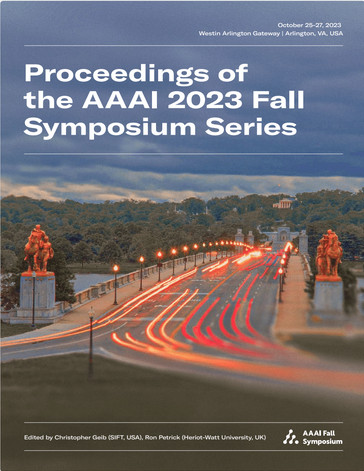Enabling High-Level Machine Reasoning with Cognitive Neuro-Symbolic Systems
DOI:
https://doi.org/10.1609/aaaiss.v2i1.27701Keywords:
Cognitive Architecture, High-level Reasoning, Neuro-symbolic System, Large Language ModelAbstract
High-level reasoning can be defined as the capability to generalize over knowledge acquired via experience, and to exhibit robust behavior in novel situations. Such form of reasoning is a basic skill in humans, who seamlessly use it in a broad spectrum of tasks, from language communication to decision making in complex situations. When it manifests itself in understanding and manipulating the everyday world of objects and their interactions, we talk about common sense or commonsense reasoning. State-of-the-art AI systems don’t possess such capability: for instance, Large Language Models have recently become popular by demonstrating remarkable fluency in conversing with humans, but they still make trivial mistakes when probed for commonsense competence; on a different level, performance degradation outside training data prevents self-driving vehicles to safely adapt to unseen scenarios, a serious and unsolved problem that limits the adoption of such technology. In this paper we propose to enable high-level reasoning in AI systems by integrating cognitive architectures with external neuro-symbolic components. We illustrate a hybrid framework centered on ACT-R, and we discuss the role of generative models in recent and future applications.Downloads
Published
2024-01-22
How to Cite
Oltramari, A. (2024). Enabling High-Level Machine Reasoning with Cognitive Neuro-Symbolic Systems. Proceedings of the AAAI Symposium Series, 2(1), 360-368. https://doi.org/10.1609/aaaiss.v2i1.27701
Issue
Section
Integration of Cognitive Architectures and Generative Models

